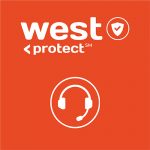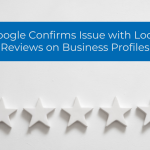Hashtags for Social Media Success
March 29, 2024What is the best strategy for hashtags today? There is a mix of opinions out there and unless you watch the data and analytics for yourself, you won’t know what’s best for your social profiles and your niche. Regardless, hashtags are part of a successful social media strategy. But don’t get hung up here. If anything is true it is this – there is more to social media success than the use of hashtags. Consider diving into video, creating engaging hooks, working on your calls to action, captions, alt tags, and engaging with your audience before you get stuck in the weeds with hashtags. Alas, it is still on the minds of inquiring real estate agents eager to up their social media game. So, here is a basic guide on Hashtags, what they are, best practices, and additional resources.
What Are Hashtags?
Hashtags are keywords or phrases preceded by the hash symbol (#), used on social media to categorize content and make it discoverable.
The Evolution of Hashtags Across Platforms
Twitter: Where it all started
Twitter is where the hashtag was born and was primarily used to group tweets on specific topics. Today, hashtags on Twitter are used for news, trending topics, and to participate in conversations on a global scale.
- Suggestions: Use no more than 2 hashtags per tweet for optimal engagement. Hashtags should be relevant to the topic. Trending hashtags can increase visibility but should be used appropriately and ethically.
Instagram: The Visual Hashtag
Instagram utilizes hashtags to showcase and discover visual content. Users can follow hashtags, allowing them to see content in their feeds even from accounts they don’t follow, making it a powerful tool for increasing reach and engagement.
- Suggestions: Instagram allows up to 30 hashtags per post, but the sweet spot for maximum engagement is around 9 to 11 hashtags. Mixing popular, niche, and branded hashtags can help reach a broader audience. Use hashtags in captions or comments to keep posts tidy.
LinkedIn: The Professional Network
On LinkedIn, hashtags are used to categorize professional content, making it easier for users to find posts related to specific industries, skills, or professional interests. They are essential for professionals looking to establish authority in their field.
- Suggestions: LinkedIn suggests using hashtags specific to the professional content you’re sharing. Including 3 to 5 hashtags per post is considered best practice. Use industry-specific hashtags to reach your professional audience effectively.
Facebook: Connecting Through Conversations
Facebook’s use of hashtags is similar to Twitter’s, helping to categorize content and facilitate the discovery of discussions and communities. However, the effectiveness of hashtags on Facebook is often debated, with best practices suggesting a more restrained use.
- Suggestions: On Facebook, less is more with hashtags. 1 to 2 hashtags per post is recommended. Hashtags should be directly relevant to the content shared. Due to Facebook’s privacy settings, hashtags might not always increase reach as expected, so focus on quality over quantity.
TikTok: The Hashtag Challenge Arena
TikTok has taken hashtags to a new level with hashtag challenges, where users are encouraged to create content around a specific hashtag, often leading to viral trends. This platform demonstrates the power of hashtags in creating interactive and engaging content.
- Suggestions: TikTok encourages hashtags to join in on trends and challenges, or to categorize content. There’s no strict limit, but keep it to 3 to 5 relevant hashtags per post. Participating in or starting hashtag challenges can significantly boost engagement.
Best Practices for Choosing and Using Hashtags
- Be Specific and Relevant: Choose hashtags specific to your content and audience. This increases the chances of reaching your target demographic and engaging with users genuinely interested in your offerings.
- Research and Discover: Use tools and social media platforms to research which hashtags are popular and relevant to your field. This can help you tap into existing conversations and trends.
- Mix Popular and Niche Hashtags: Combine widely used hashtags with more niche ones to broaden your reach while also targeting specific audiences.
- Create Brand-Specific Hashtags: For businesses and personal brands, creating unique hashtags can help cultivate a community and make it easier for users to find your content.
- Monitor and Adapt: Keep an eye on the performance of different hashtags and adapt your strategy accordingly. What works today may not work tomorrow, so stay flexible and innovative.
- Follow Platform Guidelines: Each social media platform has its own set of best practices for hashtags. Familiarize yourself with these to maximize your content’s reach and engagement.
Additional Resouces for Hashtags
If you’re looking for additional tools and research and prioritize your hashtags a good rule of thumb is to have sets of hashtags relevant to your content pillars and keep them in a google doc or spreadsheet to copy and paste them into your posts quickly.
While there aren’t many free options for research, you can use Hootsuite’s Free AI Hashtag Generator to quickly create hashtags based on your content, or subscribe to Flick.Social for research and organizational capabilities.
For research on keywords relative to your industry and niche, use tools like Answerthepublic.com or Google Trends to identify trending keywords that you can use as hashtags in your content strategy. They are free and can also help with keywords in your post captions and website copy, increasing your SEO.
For real estate professionals and small business owners, leveraging hashtags strategically can transform your social media presence, connecting you with clients and communities in meaningful and strategic ways. But remember, hashtags are not the be-all-end-all to social media success. It is one small piece of a puzzle that will be unique to you, your business, and your location.












Comments